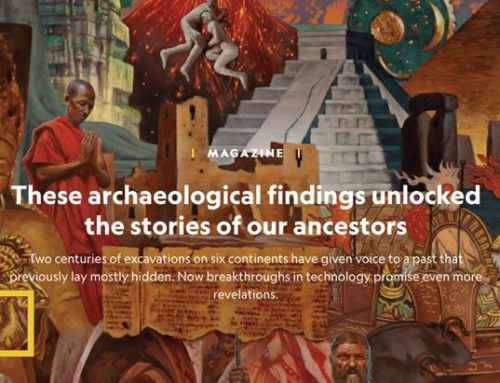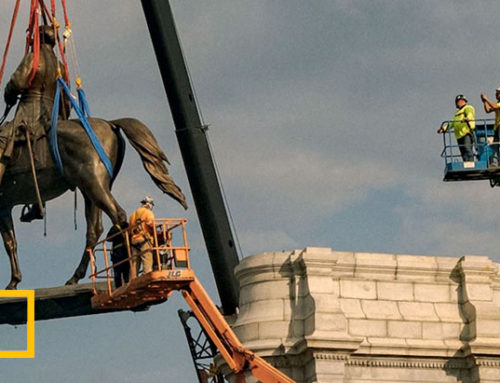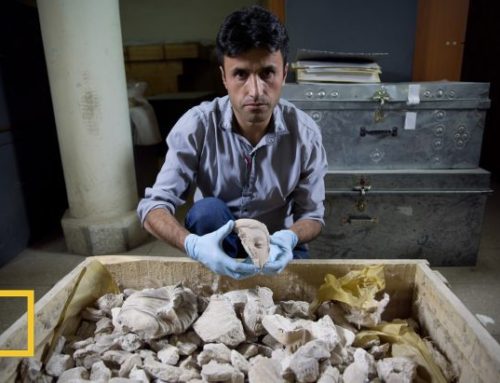
Scholars will take a fresh look at the authenticity of a rock purporting to reveal the fate of the Lost Colony of Roanoke Island.
ON A FALL morning in 1937, an Emory University geologist was walking down a hallway in the alumni building when he bumped into a middle-aged man carrying a rock. The man explained that he was a tourist who had found the 21-pound stone near the North Carolina–Virginia border. He was looking for someone to explain the strange markings on its gray surface.
When a team of Emory scholars deciphered the carved message, they were stunned to find a heartrending plea from a grieving daughter to her father, detailing the bloody murder of her husband and child—and potentially solving the nation’s oldest mystery.
The writer claimed to be Eleanor Dare, and the message was addressed to her absent father, Governor John White. Married to Ananias Dare, Eleanor gave birth to Virginia—the first English child born in the New World—shortly after the English colonists landed on Roanoke Island.
The carefully carved letters told a bone-chilling story. “Father Soone After You Goe for England Wee Cam Hither,” the tale begins. The colonists suffered two years of “Onlie Misarie & Warre” that led to the death of more than half the settlers. Tragedy struck when Indian shamans warned that the spirits were angry and all the remaining English, save seven, were abruptly killed. Among the dead were “Mine Childe” and “Ananais to Slaine wth Much Misarie.” The dead were buried four miles east of “This River,” with their names “Writ Al There on Rocke.” The tourist said he found the stone about 50 miles inland from Roanoke Island, matching White’s passing mention that the settlers had planned to move “fifty miles into the main.”
The Emory team declared the stone’s message to be authentic, and the find quickly became America’s most surprising archaeological discovery on the 350th anniversary of the Lost Colony. Soon after, a Georgia stonecutter found more than three dozen stones, also claiming to have been written by Dare. They told a gothic story of a nightmarish trek by Eleanor and the remaining colonists, ending not far from what is now Atlanta, Georgia.
By then, Emory officials had grown skeptical of the first stone’s authenticity after the tourist could not be located, and the rock was transferred to Brenau College outside Atlanta. In 1940, a team of three dozen experts led by the esteemed Harvard historian Samuel Eliot Morison met at Brenau to study all the rocks. They declared that “the preponderance of evidence points to the authenticity of the stones.”
The news made headlines around the nation. But a skeptical reporter with the Saturday Evening Post, in a devastating 1941 investigative article, unmasked the Georgia stonecutter as a fraud. The revelation damaged academic careers and embarrassed Brenau. For the next three quarters of a century, the so-called Dare stones, including the first found by the tourist, were hidden in a college basement.
In 2016 the president of Brenau, geologist Ed Schrader, took the first stone to the University of North Carolina at Asheville for analysis. After slicing off one end of the quartzite stone, he discovered the interior was bright white, while the exterior and carvings were much darker. The original inscription would have been a stark contrast to the weathered exterior—a good choice for a Roanoke colonist but a poor one for a modern forger.
As Matthew Champion, who leads the United Kingdom’s Norfolk Medieval Graffiti Survey, explains, a freshly cut inscription “would appear bright white on the stone, particularly so on this type of stone, and it takes a great deal of time for that whiteness to fade.” Champion and Schrader agree that using chemicals to mask the color—particularly in the 1930s—would have been difficult.
Eric Doehne, a Los Angeles art conservator who analyzed the Dead Sea Scrolls and Sistine Chapel frescoes, says that new methods for identifying trace elements and isotopes, as well as ultraviolet and multispectral photography, could help determine the truth of the stone’s message. But detailed chemical analysis of the carving’s crevices has yet to be done.
Epigraphy—the study of inscriptions—could provide another line of evidence. Heather Wolfe at the Folger Shakespeare Library in Washington, D.C., examined high-resolution images of the stones and concluded, “There is nothing that jumps out as a forgery.” Her one doubt was the use of Eleanor Dare’s three initials, EWD. This was not a standard way to sign one’s name in that era.
Another scholar of Elizabethan literature, Jean Wilson of Cambridge University, adds, “There’s nothing in the inscription that couldn’t be of its purported date.”
Not everyone agrees. Citing the initials, the use of Arabic numerals, and several word choices unlikely to have been in Eleanor Dare’s repertoire, Diarmaid N.J. MacCulloch, a Tudor historian at Oxford University, dismisses the carved message as having “all the plausibility of Dick Van Dyke’s cockney accent in Mary Poppins.”
What’s needed, says Champion, is a multidisciplinary study of the stone that uses new advances in chemical analysis, epigraphy, and the study of rock-cut Elizabethan inscriptions to produce fresh data. Brenau’s Schrader hopes to organize such a study in the near future to see, once and for all, whether the message writ on rock is one of America’s most important artifacts—or a remarkable fake that duped some of the country’s most respected scholars.




